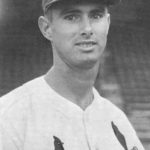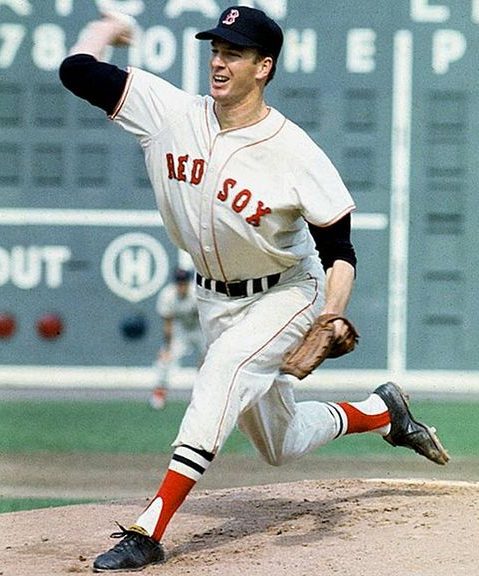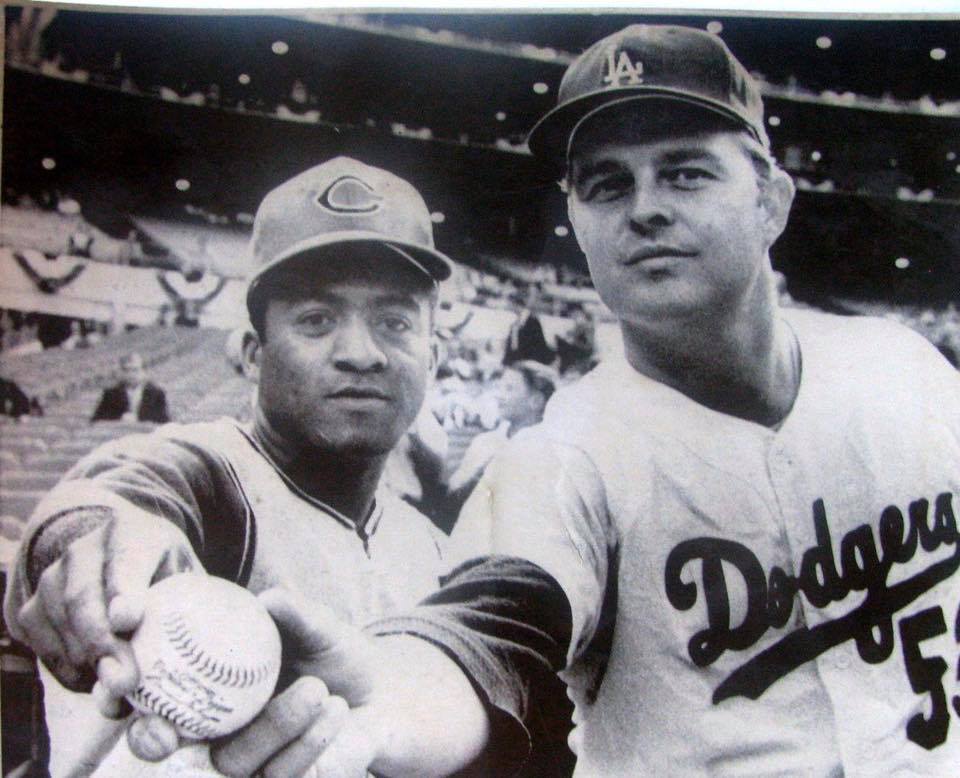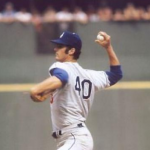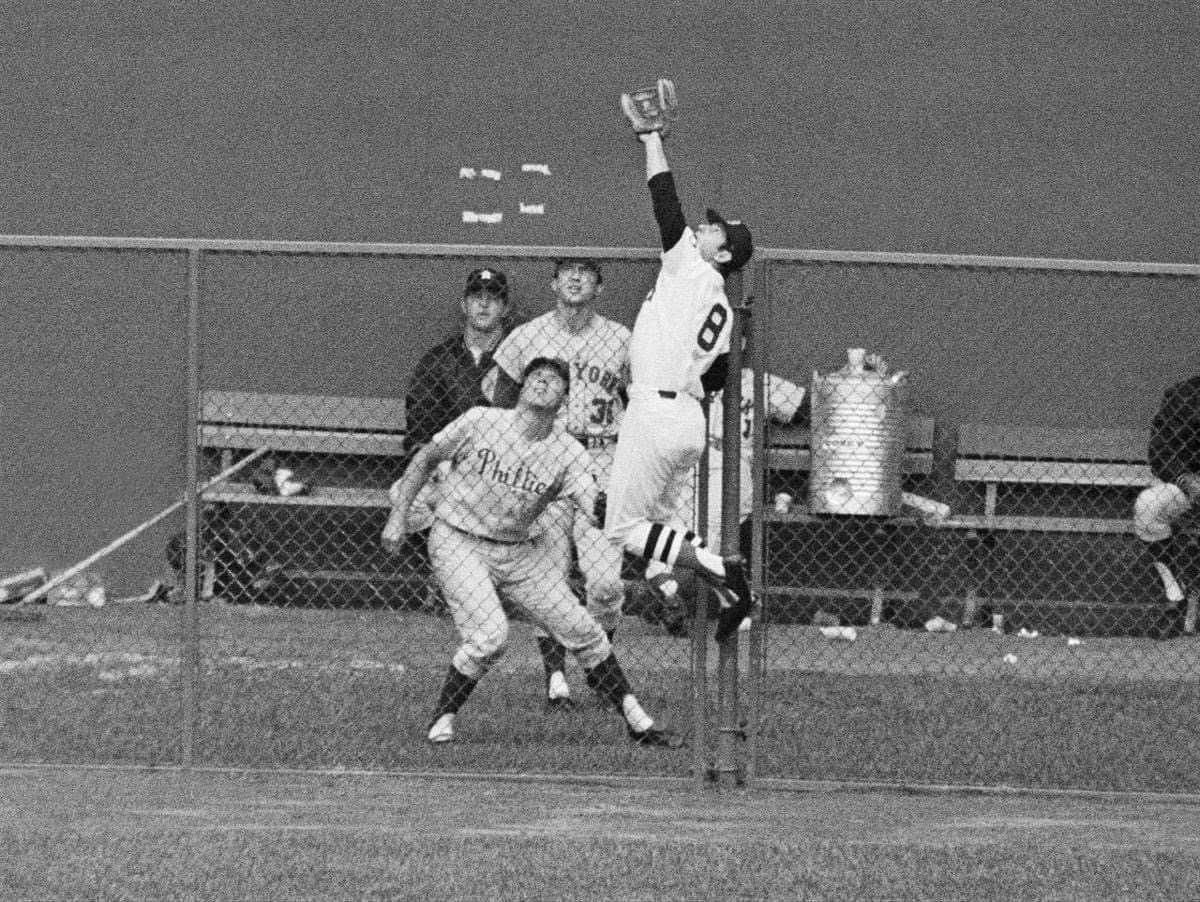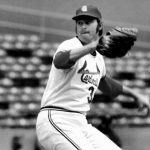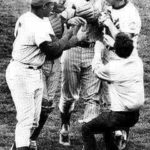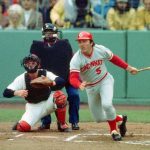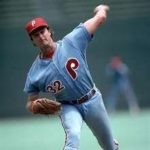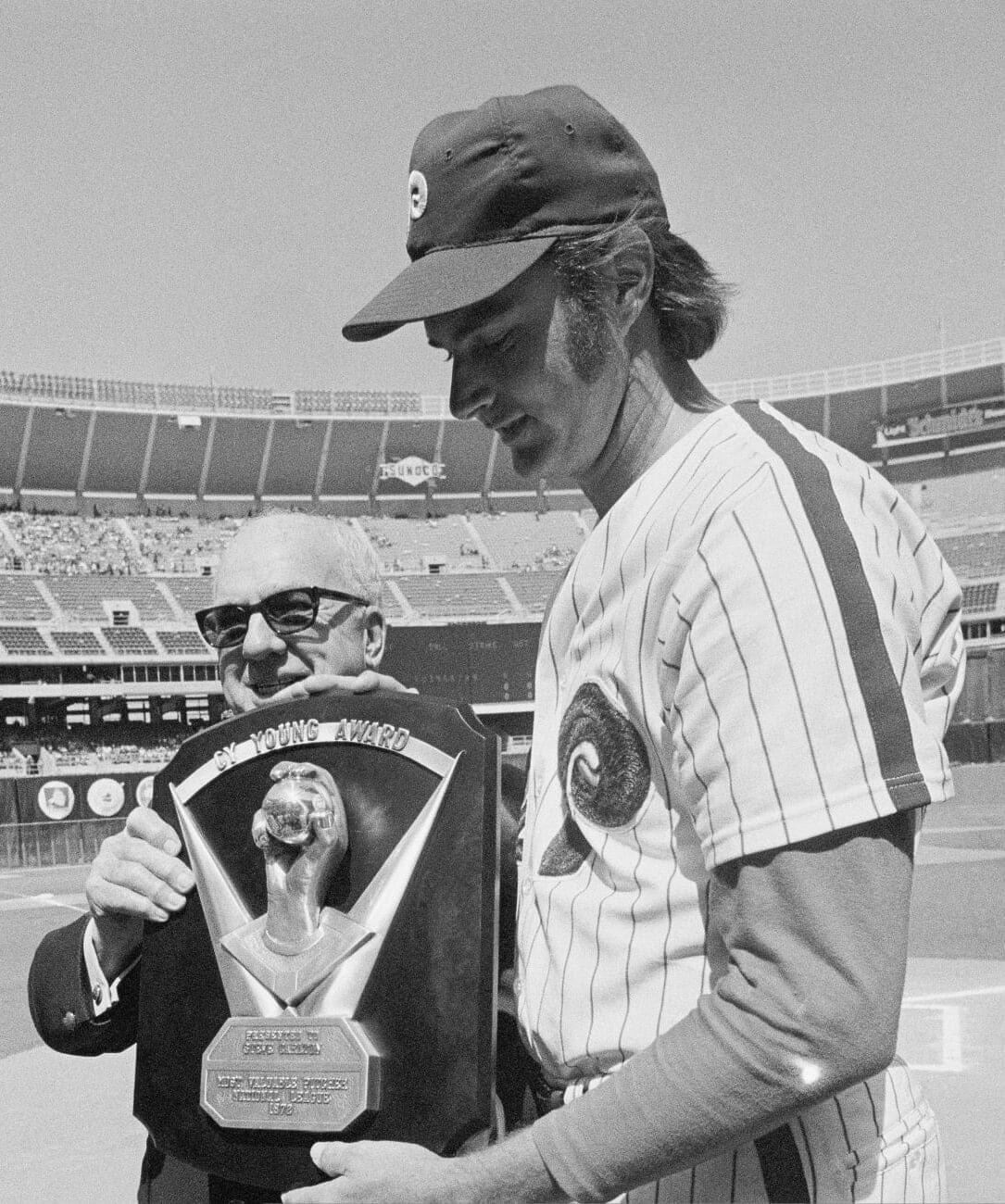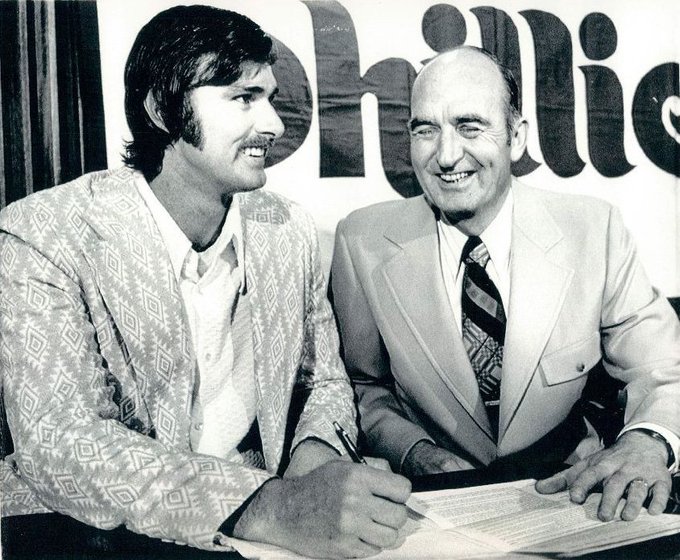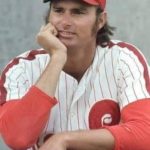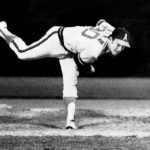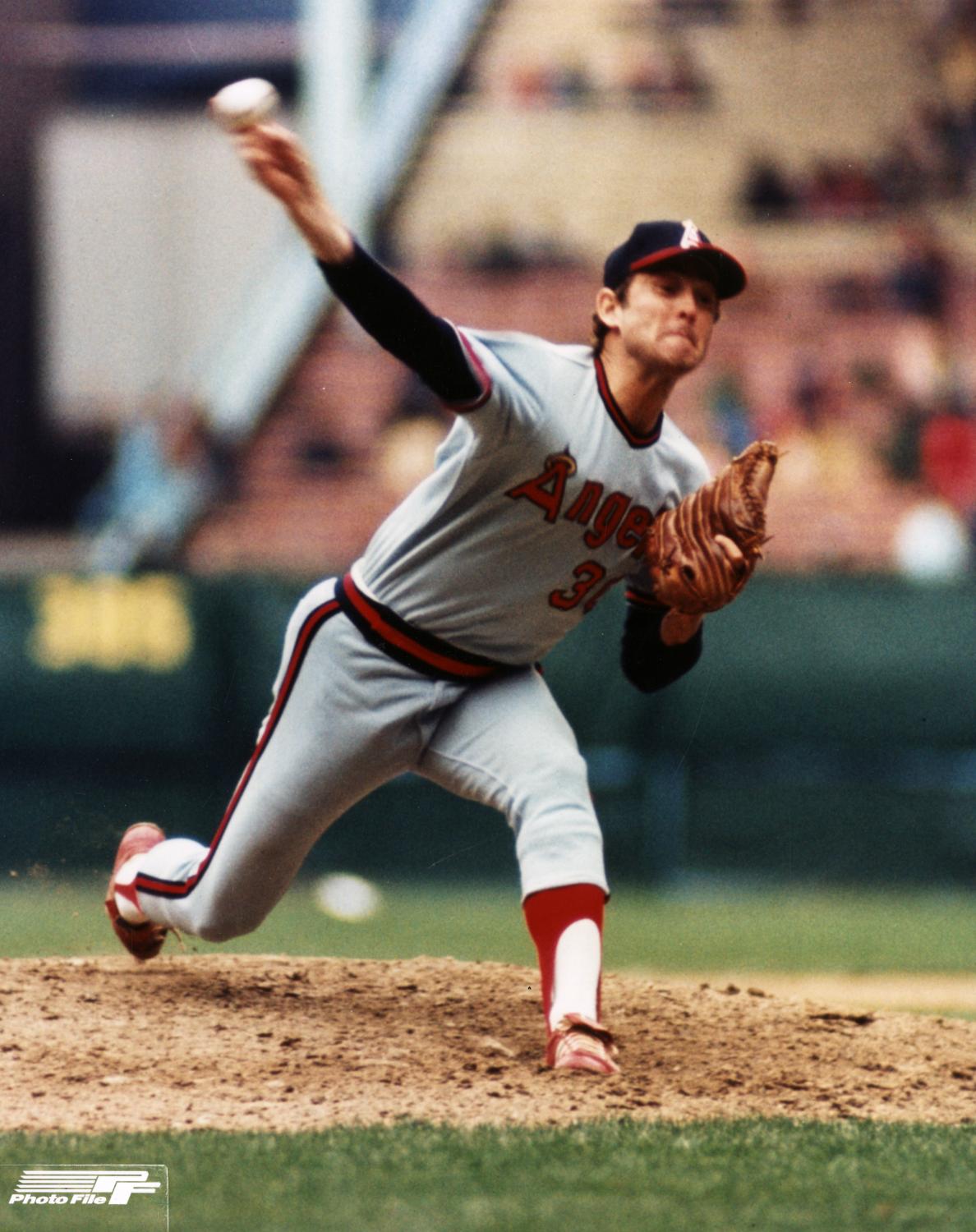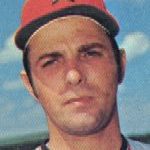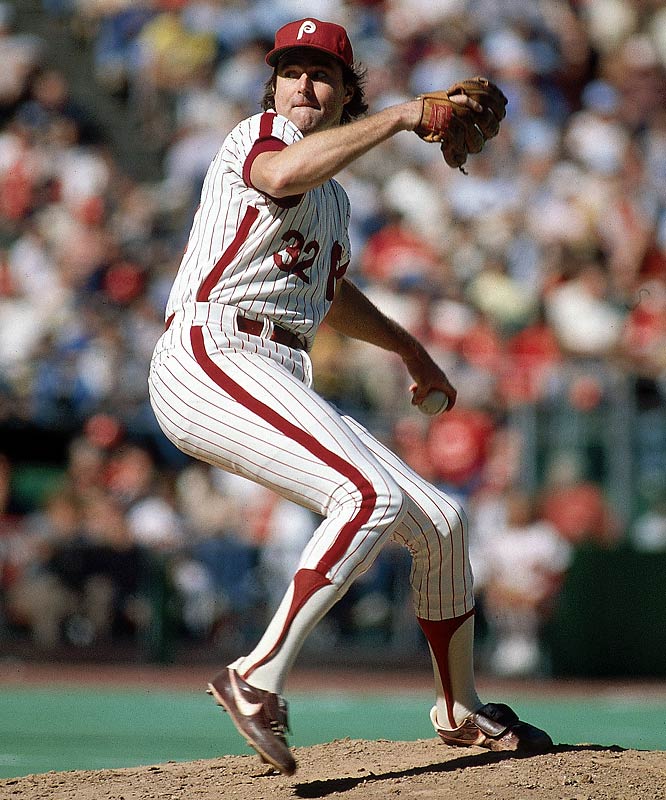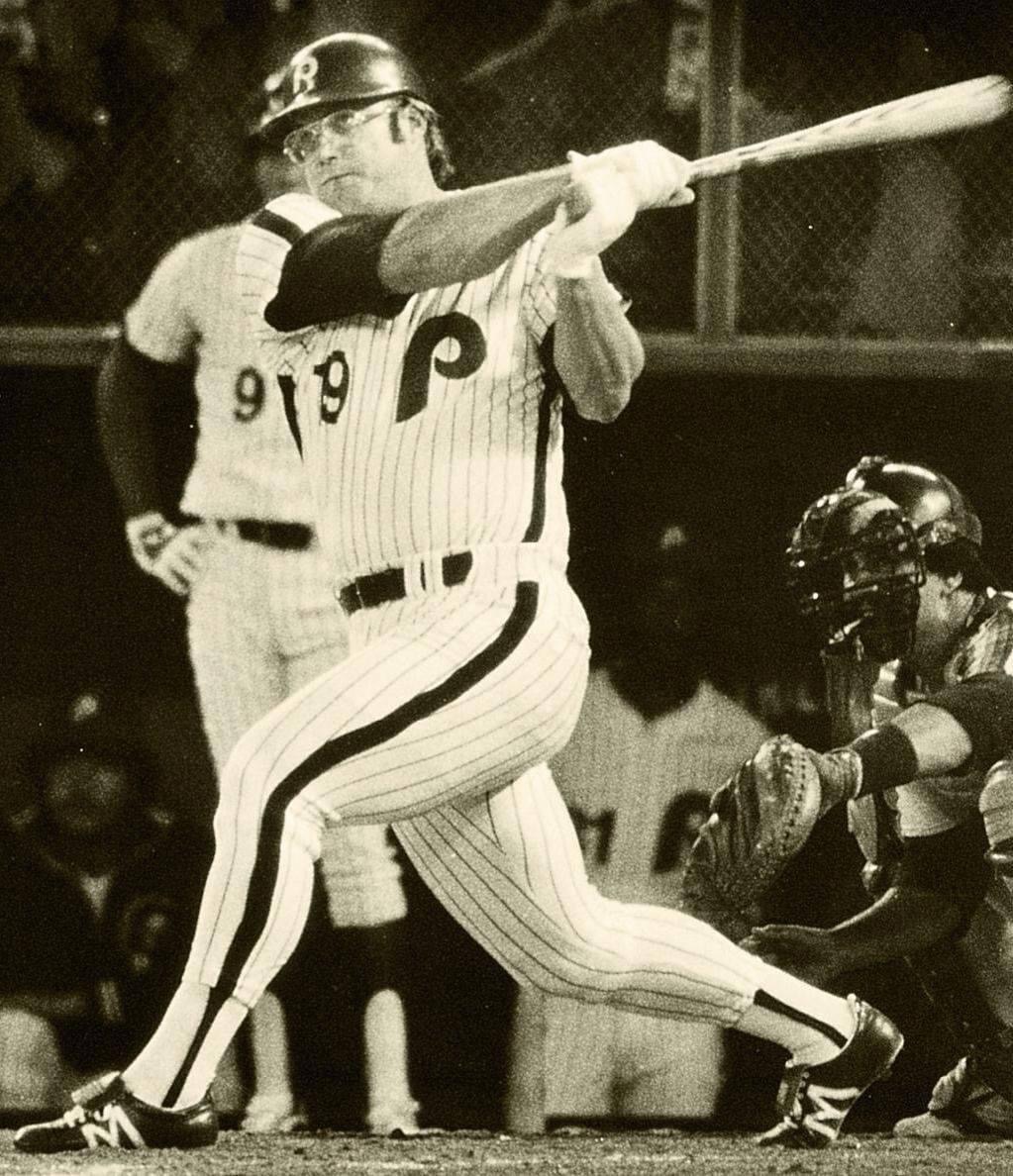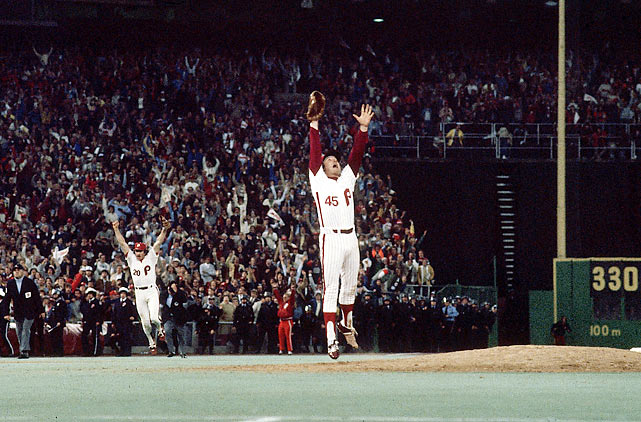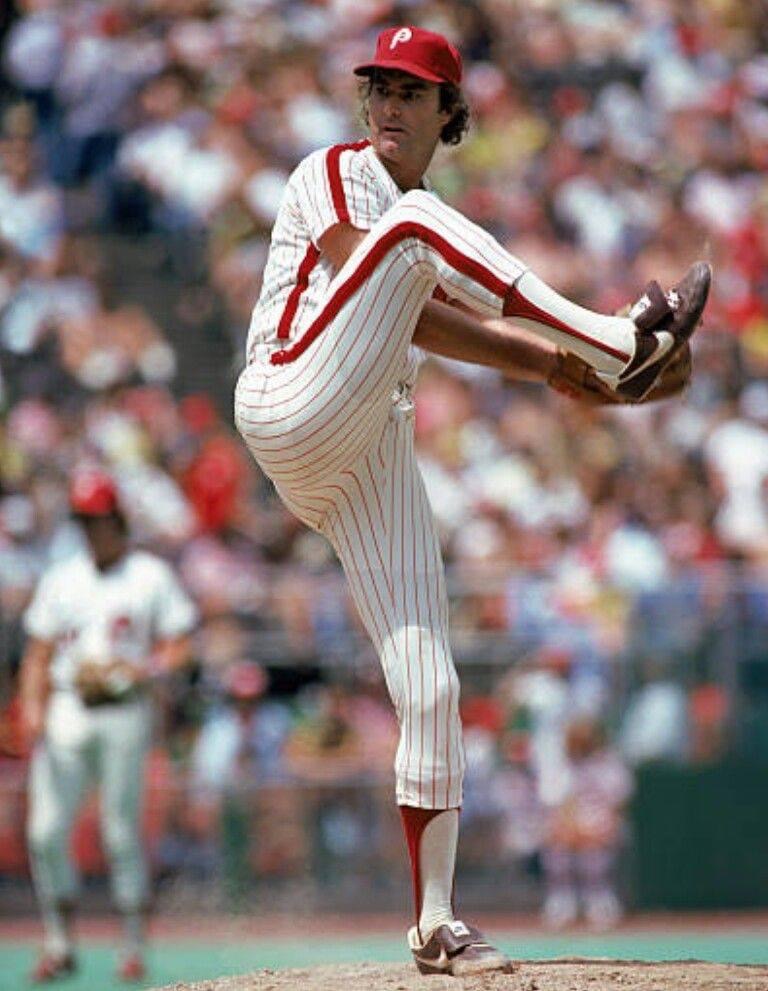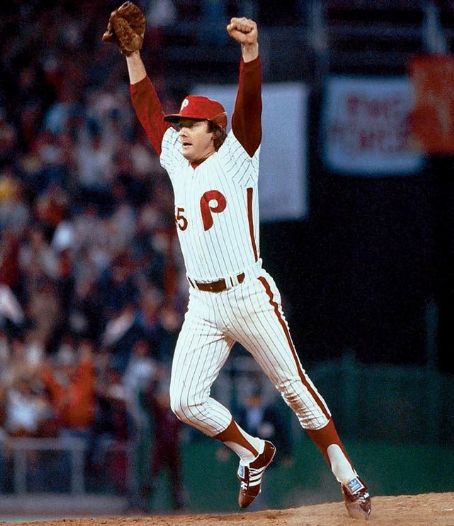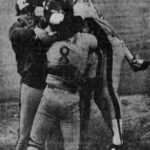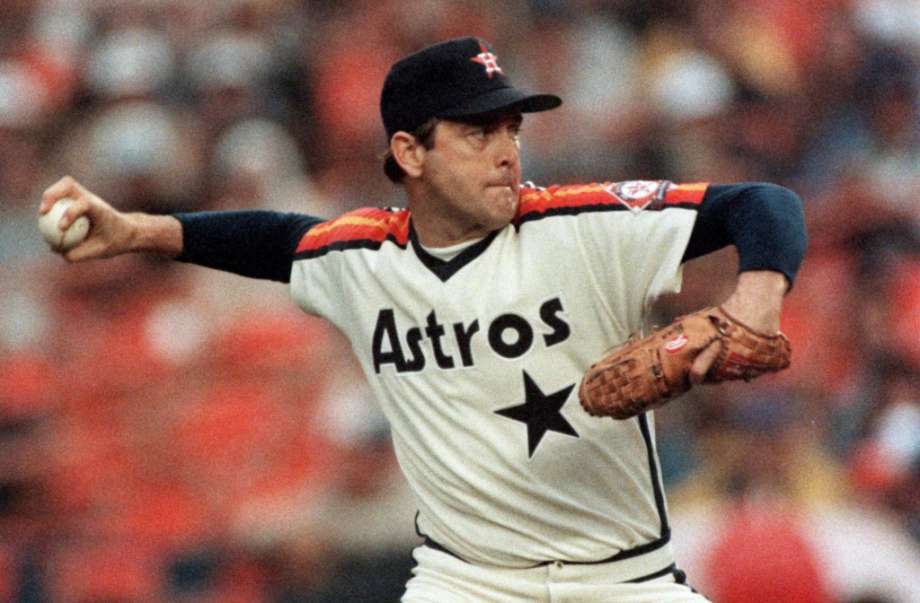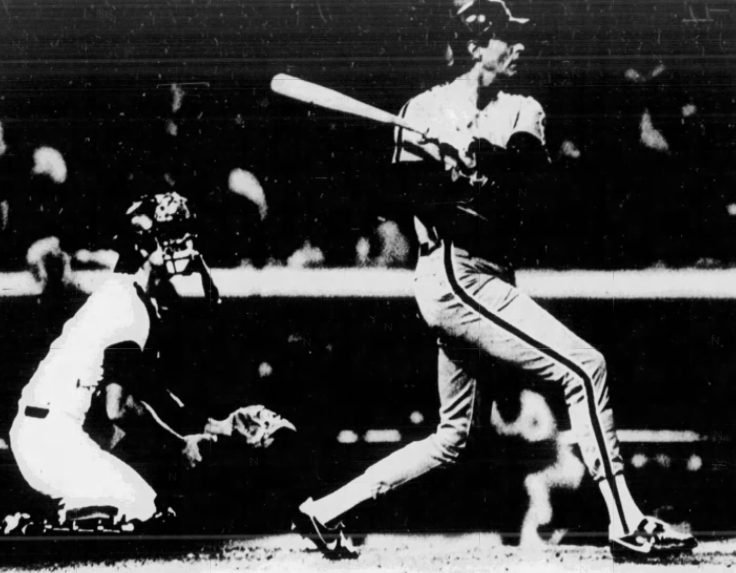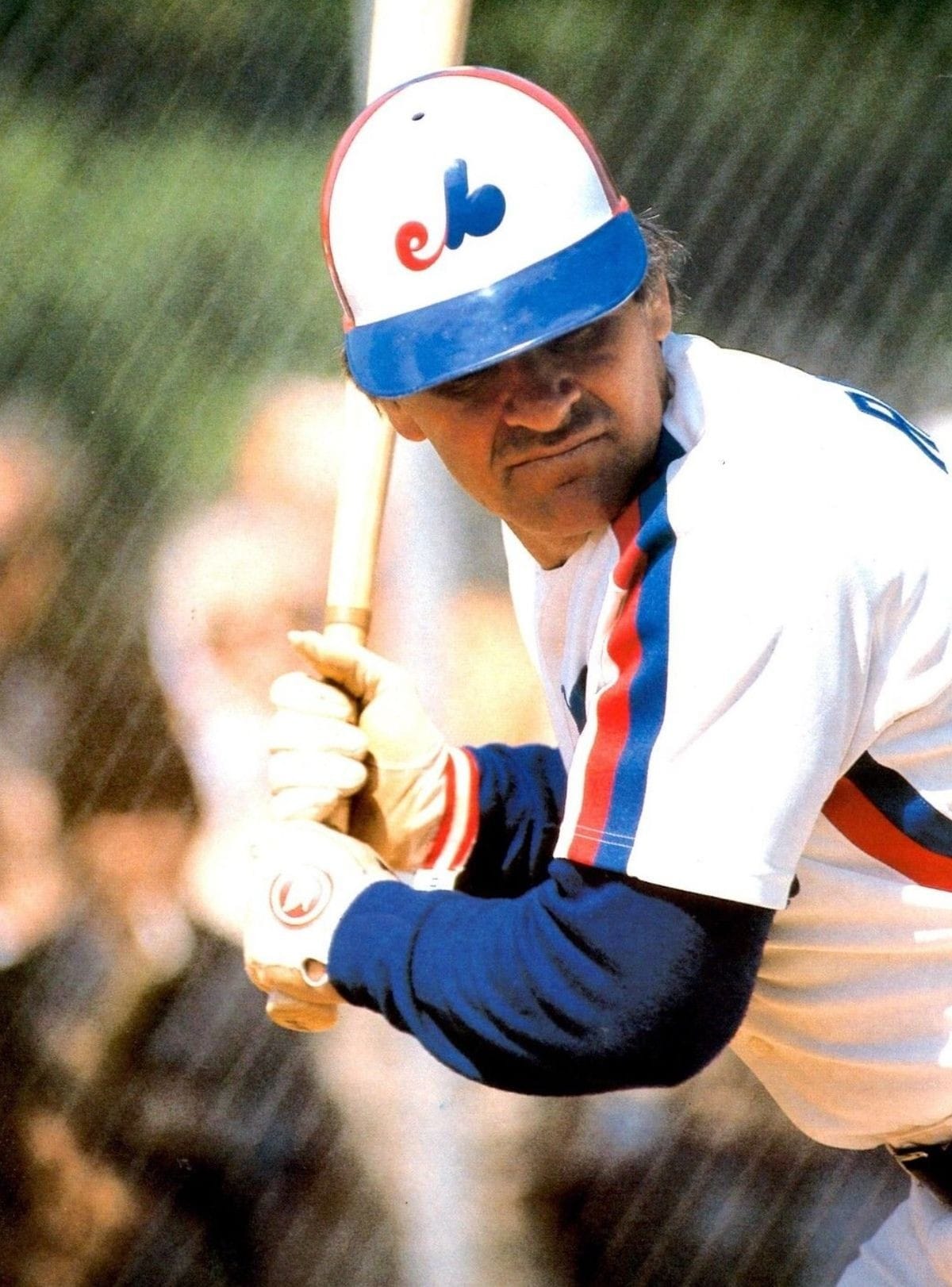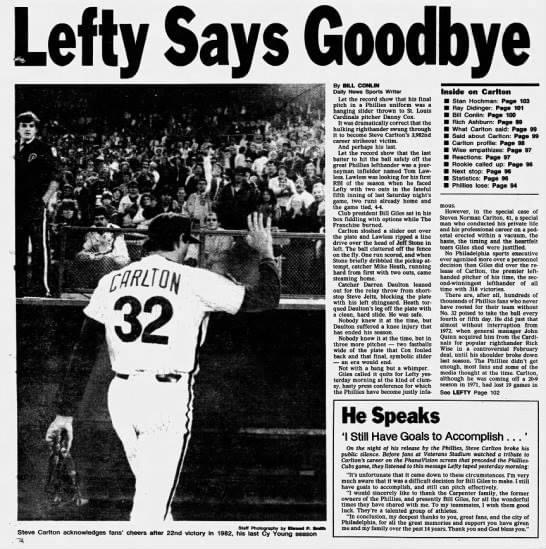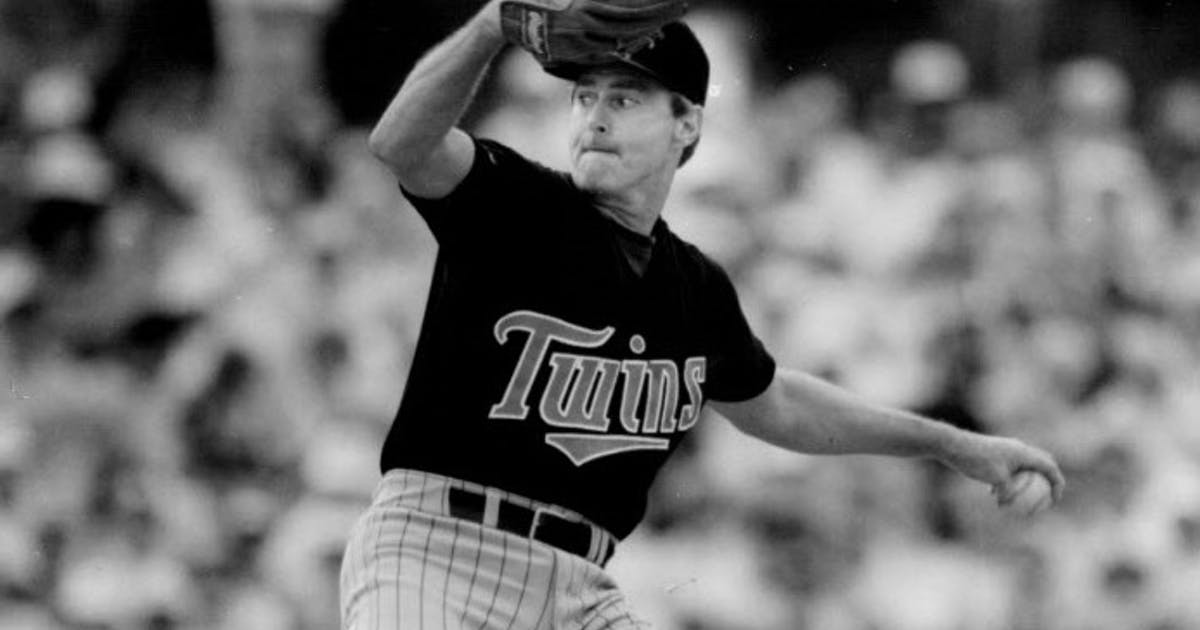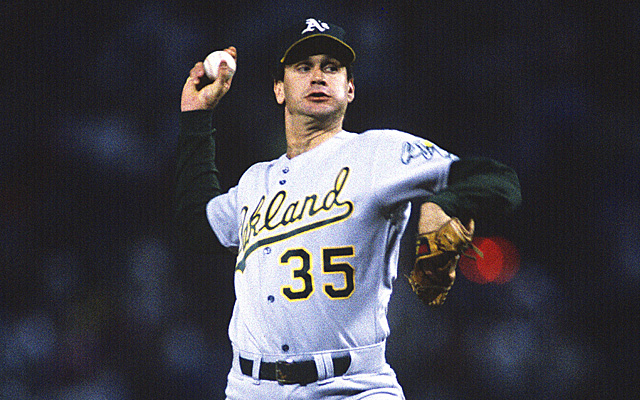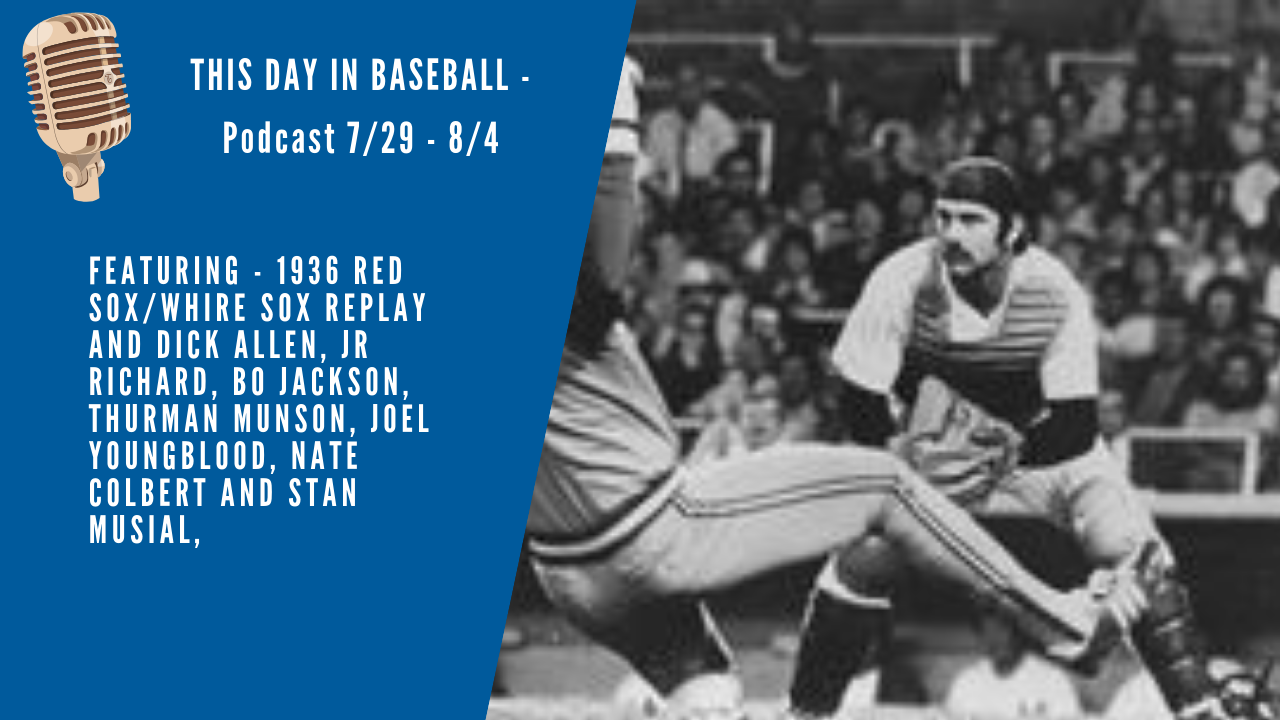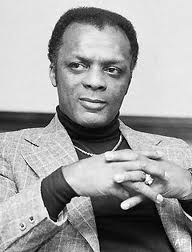Steve Carlton Stats & Facts
VINTAGE BASEBALL MEMORABILIA
Steve Carlton
Position: Pitcher
Bats: Left • Throws: Left
6-4, 210lb (193cm, 95kg)
Born: December 22, 1944 in Miami, FL
High School: North Miami HS (North Miami, FL)
School: Miami-Dade College, North Campus (Miami, FL)
Debut: April 12, 1965
Last Game: April 23, 1988
vs. CLE 5.0 IP, 9 H, 4 SO, 3 BB, 8 ER, L
Hall of Fame: Inducted as Player in 1994. (Voted by BBWAA on 436/456 ballots)
View Steve Carlton’s Page at the Baseball Hall of Fame (plaque, photos, videos).
Full Name: Steven Norman Carlton
Nicknames: Lefty
View Player Bio from the SABR BioProject
Nine Players Who Debuted in 1965
Lee May
Mark Belanger
Bobby Murcer
Roy White
Steve Carlton
Tug McGraw
Fergie Jenkins
Jim Palmer
Catfish Hunter
Notable Events and Chronology for Steve Carlton Career
Rivaling Tom Seaver as the finest pitcher of the 1970s, Steve Carlton won the National League Cy Young Award in 1972 and 1977, before capturing another two trophies during the early portion of the ensuing decade. One of the greatest left-handed hurlers in the history of the game, Carlton trails only Warren Spahn in victories for a southpaw, with 329. He also ranks fourth on the all-time strikeout list with a total of 4,136. The first pitcher to win four Cy Young Awards, Lefty, as he came to be known, surpassed 20 victories on six separate occasions, winning at least 16 games another four times. Over an 18-year stretch beginning in 1967, he failed to post at least 13 victories just once. During that same period, he also finished with an earned run average under 3.00 a total of eight times, struck out more than 200 batters eight times, and threw at least 250 innings 13 times. Carlton remains the last National League pitcher to compile as many as 25 victories in a season, as well as the last pitcher from any team to throw more than 300 innings in a season.
Biography:
Born in Miami, Florida on December 22, 1944, Steven Norman Carlton developed his pitching skills while playing Little League and American Legion baseball in his home state. After graduating from North Miami High School, he attended Miami-Dade Community College. The 18-year-old southpaw signed with the St. Louis Cardinals as an amateur free agent while still a student at Miami-Dade in 1963.
Although scouts initially expressed concerns over whether or not Carlton had the ability to throw hard enough to succeed at the major league level, the 6’4″ lefthander advanced quickly through the St. Louis farm system after instituting a rigorous workout regimen that enabled him to build himself up through the use of weights. Having developed a decent curveball and a well-above-average fastball, Carlton joined the Cardinals at the start of the 1965 campaign, appearing in a total of 15 games for the team over the course of the season without recording a decision. He received a more extensive look from the club the following year, compiling a record of 3-3 in his nine starts.
Carlton became a regular member of the St. Louis starting rotation in 1967, helping the Cardinals win the first of two consecutive National League pennants by going 14-9 with a 2.98 earned run average, while striking out 168 batters in 193 innings of work. Although Carlton lost his only World Series start to Boston, he allowed the Red Sox just one unearned run and three hits in six innings pitched. After another solid season the following year, Carlton developed into one of the National League’s dominant pitchers in 1969. Experimenting for the first time with a slider, which eventually became his signature pitch, Carlton posted a record of 17-11, an ERA of 2.17, and struck out 210 batters, topping the 200-mark for the first time in his career. The big lefthander’s 2.17 ERA placed him second in the National League rankings, earning him a start in the All-Star Game. Carlton had arguably his most dominating performance of the year against the eventual world champion New York Mets on September 15, striking out a then-record 19 men, despite ironically losing the contest, 4-3, on a pair of two-run home runs by Ron Swoboda.
A contract dispute with the Cardinals made Carlton a no-show at spring training in 1970, leading to a horrendous 10-19, 3.73 ERA campaign by the 25-year-old southpaw. After having difficulty controlling his breaking pitches all year, Carlton relied more heavily on his fastball in 1971, bouncing back by compiling a record of 20-9.
Carlton subsequently asked the Cardinals for a $10,000 raise to $65,000 during the off-season, raising the ire of team management. Instead of granting the pitcher’s request, St. Louis traded him to the Philadelphia Phillies for right-hander Rick Wise. Although Wise was a fine pitcher in his own right, the deal ended up going down as one of the worst in Cardinals history. Bing Devine, the St. Louis General Manager who dealt Carlton at the behest of Cardinals owner Auggie Busch, later explained his thinking at the time: “We hadn’t been able to sign Carlton. There was no free agency, so he didn’t have the freedom to say, ‘Sign me or else.’ He was being very difficult to sign for the ridiculous amount of $10,000 between what he wanted and what we’d give him. Many times Mr. Busch gave me a little leeway in the budget, but in the case of Carlton, Mr. Busch developed the feeling that Carlton was a ‘smart-aleck’ young guy,’ and I’m not used to having smart-alecks tell me what to do.”
Carlton later shared his recollections of the trade that made him a member of the Phillies: “Auggie Busch traded me to the last-place Phillies over a salary dispute. I was mentally committed to winning 25 games with the Cardinals and now I had to re-think my goals. I decided to stay with the 25-win goal and won 27 of the Phillies 59 victories. I consider that season my finest individual achievement.”
Carlton’s 1972 performance has to be considered one of the finest ever turned in by a pitcher. By going 27-10 for the last-place Phillies, the lefthander established a major league record by compiling 46 percent of his team’s victories. In addition to leading all National League pitchers in wins, he topped the circuit with a 1.97 ERA, 310 strikeouts, 30 complete games, and 346 innings pitched, en route to winning the pitcher’s version of the Triple Crown, his first Cy Young Award, and the Hickok Belt as the top professional athlete of the year. Carlton performed so magnificently that he also placed fifth in the league MVP voting despite Philadelphia’s distant last-place finish.
Carlton attributed his success in 1972 to his grueling training regimen, which included Eastern martial arts techniques, the most famous of which involved twisting his fist to the bottom of a five-gallon bucket of rice. His brilliant campaign also resulted from the further development of his three primary pitches – a rising fastball, a long looping curveball, and a legendary slider that he relied on more heavily than ever before. The last offering typically broke down-and-in to right-handed batters, making it virtually impossible for them to make solid contact with the ball. Tim McCarver, who made a career out of catching Carlton, first with the Cardinals and later as a member of the Phillies, noted, “When I played for other teams against Steve, I could hear the right-handed hitters saying, ‘He may have gotten me out, but at least he didn’t throw me the slider.'”
Although Carlton led the National League with 18 complete games and 293 innings pitched the following year, he also topped the circuit with 20 losses, while seeing his ERA almost double to 3.90. While occasional soreness in Carlton’s left elbow was at least partly responsible for his relative ineffectiveness, articles began appearing in the Philadelphia newspapers questioning his somewhat unusual training techniques, as well as his fondness for fine wine. Growing increasingly indignant over his treatment by the members of the press corps, Carlton severed all ties with the media at the conclusion of the 1973 campaign, vowing to never again answer their questions. Looking back at his acrimonious relationship with the media, Carlton later suggested, “It (not talking to the media from 1974 through the end of his career) was perfect for me at the time. It took me two years to make up my mind. I was tired of getting slammed. To me it was a slap in the face. But it (his silence) made me concentrate better.”
Still bothered by occasional pain in his pitching elbow, Carlton posted a combined record of 31-27 from 1974 to 1975, leading the league with 240 strikeouts in the first of those campaigns. Healthy again in 1976, he helped the Phillies capture the N.L. East title for the first of three consecutive times by going 20-7, with a 3.13 ERA. Carlton won his second Cy Young the following year, leading the league with a record of 23-10, while also placing among the leaders with a 2.64 ERA, 17 complete games, 283 innings pitched, and 198 strikeouts.
After winning a total of 34 games the previous two seasons, Carlton captured his third Cy Young Award in 1980. The lefthander’s 2.34 ERA and league-leading 24 victories, 304 innings pitched, and 286 strikeouts helped lead the Phillies to their fourth N.L. East title in five years. Carlton then performed brilliantly during the postseason, winning his only decision against Houston in the NLCS, before going 2-0 with a 2.40 ERA during Philadelphia’s six-game World Series triumph over Kansas City.
Carlton pitched extremely well during the strike-shortened 1981 campaign, compiling a record of 13-4 and a 2.42 ERA, before winning the Cy Young Award for the fourth and final time the following season. Lefty finished 23-11 in 1982, leading the N.L. in wins for the fourth time. He also topped the circuit with 19 complete games, six shutouts, 296 innings pitched, and 286 strikouts, while posting a very solid 3.10 ERA.
The 1982 season turned out to be Carlton’s last big year. He pitched well enough in 1983, leading the National League with 284 innings pitched and 275 strikeouts despite finishing the campaign with a record of only 15-16. He also acquitted himself quite well in the postseason, winning his two starts against Los Angeles in the NLCS, while posting an outstanding 0.66 ERA. Although he lost his only World Series start to Baltimore, Carlton allowed just two earned runs in 6 2/3 innings of work. He had another solid year in 1984, going 13-7 with a 3.58 ERA. However, the 39-year-old hurler clearly appeared to be nearing the end of his career, since he completed only one of his 33 starts.
Carlton went just 1-8 in his first 16 starts in 1985 before being placed on the disabled list for the remainder of the year. After he began the 1986 season just 4-8 with a 6.18 ERA, the Phillies asked him to retire. Carlton, though, refused to do so, forcing the team to finally release him. Carlton then broke more than a decade of silence in the media to voice his reasons, and to thank the Philadelphia fans for their support. The lefthander split the remainder of the 1986 campaign between the San Francisco Giants and the Chicago White Sox, experiencing little in the way of success, before failing again the following year with both the Cleveland Indians and Minnesota Twins. He ended his career early in 1988 after being released by Minnesota.
Upon his retirement, Carlton ranked second only to Nolan Ryan in career strikeouts (he has since slipped to fourth). Over 24 major league seasons, he compiled a record of 329-244, an ERA of 3.22, and 254 complete games. Carlton led the National League in wins four times, ERA once, strikeouts and innings pitched five times each, and complete games three times. In addition to winning the Cy Young Award four times, he placed in the top five in the league MVP voting on three separate occasions. Although Carlton spent most of his career not speaking to them, the members of the BBWAA acknowledged his greatness by electing him to the Hall of Fame in 1994, the very first time his name appeared on the ballot.
Former Phillies outfielder Richie Ashburn served as a broadcaster for the team throughout Carlton’s tenure in Philadelphia. Ashburn expressed his admiration for the lefthander by saying, “Lefty was a craftsman, an artist. He was a perfectionist. He painted a ballgame. Stroke, stroke, stroke, and when he got through (pitching a game) it was a masterpiece.”
Author Peter Golenbock wrote in The Spirit of St. Louis (2000): “Carlton was not your normal guy. Communicating with him was not always easy. On the mound, he would tune out all distractions. Off the mound, he did the same. If he considered you the distraction, he’d direct at you an icy stare. Teammates considered him to be a recluse. He hated to sign autographs. He refused to talk to reporters for long stretches at a time. He was devoted to the martial arts. He studied Far East religions. He was a wine connoisseur. He pissed people off with his stand-offishness and arrogance. Carlton was also the finest left-handed pitcher of his generation. In a career that would last 24 years, he would win 329 games, ninth all-time, with an ERA of 3.22. His 4,136 strikeouts were second all-time only to Nolan Ryan. Unfortunately, most of his career was not spent in St. Louis but rather in Philadelphia.”
After retiring from the game, Steve Carlton waxed philosophical about his career, saying, “Everything I was, physically and mentally, that’s what I put on that field….So what I did on the field was the essence of what I am. Remember me like that.”
@ET-DC@eyJkeW5hbWljIjp0cnVlLCJjb250ZW50IjoicG9zdF90YWdzIiwic2V0dGluZ3MiOnsiYmVmb3JlIjoiTGVhcm4gTW9yZSBhYm91dCB0aGUgdGVhbXMsIHBsYXllcnMsIGJhbGwgcGFya3MgYW5kIGV2ZW50cyB0aGF0IGhhcHBlbmVkIG9uIHRoaXMgZGF0ZSBpbiBoaXN0b3J5IC0gLSAtIC0gLSAtIC0gIiwiYWZ0ZXIiOiIiLCJsaW5rX3RvX3Rlcm1fcGFnZSI6Im9uIiwic2VwYXJhdG9yIjoiIHwgIiwiY2F0ZWdvcnlfdHlwZSI6InBvc3RfdGFnIn19@


